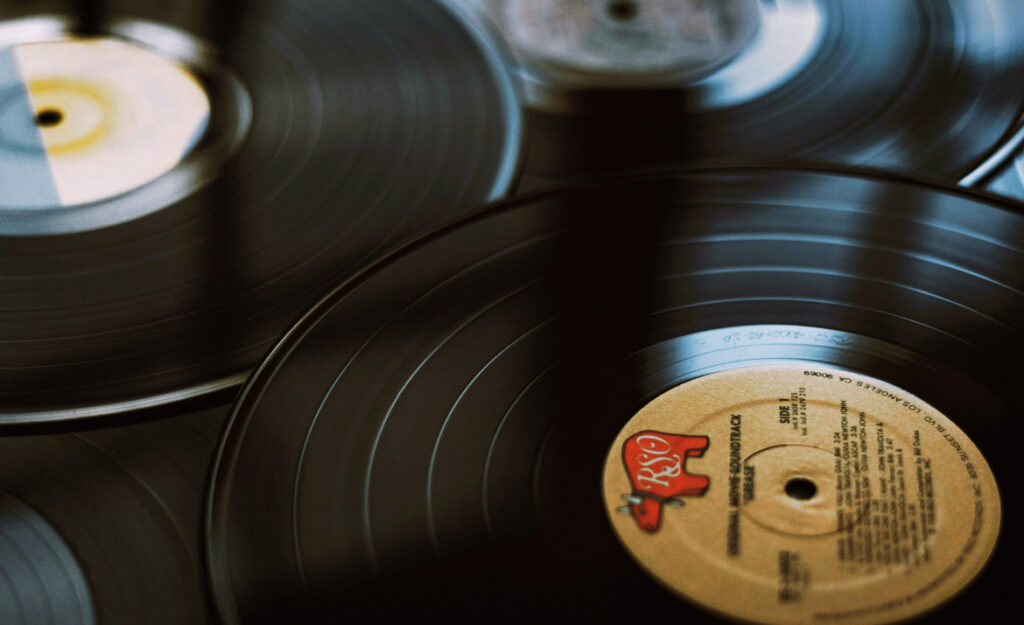
Flipping through records at a local shop, you’ll notice right away that vinyl albums don’t all feel the same. Some slip out of their sleeves light and bendy, while others land solidly in your hands. That firsthand contrast is at the heart of any credible vinyl weight comparison, a topic that goes well beyond collector curiosity.
Vinyl weight shapes both the listening experience and the long-term health of your collection. Audiophiles debate the subtleties, but anyone who wants their records to last learns quickly that not all LPs wear the same thickness or stability. The right weight choice can mean fewer skips, less warping, and audio detail that pops in every groove.
If you’ve ever wondered why some records sound and feel better than others, you’re in the right place. Read on as we unpack what vinyl weight comparison really means, which weights thrive under stylus pressure, and how to spot the best match for your playback priorities.
Recognizing Record Weights at a Glance Brings Instant Confidence
Learning to identify vinyl record weights on sight — and by touch — lets you quickly assess condition and quality. Most records fall into a handful of categories, each with their own characteristics and implications for playback.
Low-weight records flex in your hands, mid-weights have seasonal staple status, and heavyweight pressings set the gold standard for collectors. This visual and tactile check takes seconds, but informs smarter buying and storing every time.
Spotting Standard Weight Pressings During a Flip
Any crate digger will handle plenty of thin, standard-weight records — usually in the 120–140 gram range. These pressings dominated the market for decades, valued for affordability and easy pressing compared to modern heavyweights.
Standard weights tend to feel light and sometimes have a subtle flex. When comparing two records, gently bend each by the edge; a standard-weight disc will yield slightly, while heavier ones feel rigid from the start.
If vinyl weight comparison is new for you, start by noting how much each record bends during your search. This move can spot a lightweight pressing, even if the label or sleeve doesn’t list weight.
Pinpointing Audiophile Heavyweights in Your Stack
High-end pressings clock in at 180 grams and up, drawing admiration from audiophiles and archival enthusiasts alike. They feel noticeably more substantial, resist flexing, and sometimes even have a sharper sound stage when played on high-quality systems.
Pick up a 180g record, and it’ll seem noticeably thicker at the rim than a 140g pressing. Some specialty pressings feature visual cues or specific hype stickers to highlight heavyweight status — always a cue for careful handling and storage.
These records form the backbone of vinyl weight comparison debates, since their extra mass supposedly helps audio tracking. If you’re aiming to boost clarity or limit skips, heavyweights offer a simple upgrade that you can spot immediately.
| Weight Category | Typical Range (grams) | Main Advantage | What to Do Next |
|---|---|---|---|
| Standard | 120–140g | Affordable, flexible | Store vertically, avoid weight stacking |
| Midweight | 150g–165g | Reliable play, less susceptible to warping | Use with well-adjusted tonearms |
| Heavyweight | 180g–200g | Stable tracking, audiophile preferred | Pair with a high-fidelity cartridge |
| Picture Disc | Varies (typically 140g–180g) | Visual appeal, collectible | Play gently, avoid excessive handling |
| 7-inch Single | 35g–45g | Short playtime, portable | Protect with proper sleeves |
Choosing the Right Vinyl Weight Improves Every Listening Session
Picking vinyl records based on weight isn’t just a collector’s flex — it’s one of the easiest ways to shape your daily listening. The right weight means smoother tracking, cleaner sound, and records that endure decades.
When making any vinyl weight comparison, remember: not every turntable or shelf is ready for heavyweights. Matching your setup avoids disappointment and spotlights the advantages you want most from your favorite albums.
Appreciating Storage and Handling Needs for Each Vinyl Weight
Vinyl storage routines need small tweaks for every record weight. Standard records need gentle support to dodge bending. Audiophile-grade records prefer solid shelving. Compare light and heavy pressings routinely to check for warping or edge-wear before damage sets in.
- Choose thicker inner sleeves for heavyweight records to reduce scuffing and keep static at bay each time you insert or remove records.
- Store each vinyl weight vertically, but keep heavyweight pressings from pressing down on standard records to prevent bowing over time.
- Invest in sturdy dividers for shelving; lightweight records can droop between gaps, while heavy vinyl needs stiffer backing for support.
- Label shelves for different weights so you don’t cram heavy vinyl among lighter, more fragile pressings for extended periods.
- Clean each record before storing. Dust and grit are more prone to grind into softer, thin pressings but can also mar audiophile weights if left unchecked.
Take these steps the next time you sort your collection. The payoff: each vinyl weight comparison benefits from tuned storage, and your favorite LPs last longer with perfect sound.
Factoring in Equipment Compatibility With Heavier Pressings
Turntable specs play a pivotal role when dealing with different vinyl weights. Ensuring that your tonearm and anti-skate adjustments are tuned for heavy pressings prevents stylus drag and uneven playback.
- Check your turntable’s weight limit; entry-level decks may struggle with double-heavy LPs and require tweaks for reliable performance.
- Upgrade platter mats if static buildup is an issue. Heavier records can press dust into felt mats — rubber or cork alternatives stay cleaner.
- Balance your tonearm each time you swap from a light to a heavy record. This ensures optimum tracking force and groove contact for every spin.
- Calibrate your anti-skate. Heavy records may shift stylus alignment slightly if the counterweight isn’t dialed in, risking premature groove wear.
- Upgrade to a finer stylus when collecting audiophile pressings. The extra weight deserves a high-output cartridge for fully detailed playback.
Use these tips when setting up your listening session. A thoughtful vinyl weight comparison goes beyond the record — it fine-tunes your playback for each new find.
Tracking Performance Differences During Real-Life Listening
Real-world playback shines a spotlight on why vinyl weight comparison matters so much. Even a casual session reveals how different weights cope with everyday listener habits, room acoustics, and equipment quirks.
Recognizing Warping and Groove Distortion Issues
Standard-weight LPs are more likely to warp if stored under uneven pressure or exposed to rapid temperature swings. You’ll see the disc wobble as it plays, sometimes producing a warbly, inconsistent sound. Warped grooves challenge even well-tuned styluses, leading to skips or muffled detail.
Heavier records show more resilience during years of shelf storage and repeated playback. The extra thickness helps resist minor heat changes and dampens vibration from subwoofers or loudspeakers positioned close to your setup. This stability keeps playback true to its mastering session much longer.
If you spot visible bowing but no audible tracking problems, try a gentle disc flattener specifically designed for vinyl use. Serious warps call for professional help or replacement — especially if they come from improper stacking of mixed weights.
Assessing Surface Noise and Clarity in Home Playback
Surface noise comes from dust, static, or tiny scratches amplified by the stylus. Lightweight records pick up blemishes quickly, as their flex can cause micro-movements in the groove wall, revealing more background hiss or click when played on revealing systems.
Heavier records, especially those marketed for audiophile use, present cleaner soundscapes with less stray surface noise. Their grooves sit deeper in the vinyl compound and resist flex-induced wear over many sessions. You’ll notice extra detail, like backing harmonies or studio room ambiance.
Even so, perfect playback demands regular cleaning, no matter the record’s weight. Use a carbon fiber brush before every play and deep-clean with a gentle solution after busy weeks of listening to keep your collection ready for comparison.
Understanding Pressing Differences That Influence Collector Value
Knowing exactly which vinyl weight is in your hands turns collectors into sharper buyers and sellers. Vintage, standard, and heavyweight pressings each land with distinct reputations and resale values, making vinyl weight comparison a daily routine for serious enthusiasts.
Specific release years, labels, and even musical genres influence weight choices at pressing plants. Classic jazz records or early rock‘n’roll LPs are usually lighter, while reissues and high-fidelity genres command thicker, more resilient materials.
Recognizing Market Trends in Heavier Record Pressings
Modern audiophile and limited-edition releases nearly always use heavyweight vinyl. These pressings get premium placement at stores, and resell quickly among collectors seeking stable performance and rare variants. Noting weight helps spot a genuine modern reissue versus a lightweight original pressing from decades past.
Heavyweight runs sometimes include numbered editions, alternate colorways, or bonus features that boost collector value. Checking for heft during crate digging can lead directly to rarities — or help avoid overpriced, lightweight counterfeits.
Build the habit of reviewing vinyl weight comparison data before buying online. Sellers sometimes list weight in product descriptions or include factory stickers to support authenticity claims with concrete evidence.
Seeing Genre Preferences Play Out in Record Weight
Record labels tailor vinyl weights to their target audiences. Classic funk or disco singles from the 1970s frequently use the lightest molds, while modern alternative and electronic albums lean harder into heavy vinyl for detail and durability.
Collectors who love pristine audio often seek out audiophile editions of beloved albums pressed specifically at 180 grams or more. Even among casual buyers, those drawn to hip-hop, prog, and indie frequently acquire heavyweights by default as the genre standard.
Scanning shelf spines for extra thickness, or checking listings for weight stats, narrows the search during vinyl weight comparison. This practice boosts your odds of securing the best performer for your musical tastes and budget.
Optimizing Maintenance Routines by Matching Record Weight
Customizing your cleaning and care tactics according to vinyl weight prevents skips and extends every album’s life. Durable heavyweight albums reward deep cleaning, while lightweight classics need gentler washes and extra screening for invisible warps or micro-cracks.
Plan a monthly review of your collection that includes vinyl weight comparison checks. Note any flex during inspection and flag lightweights for more involved protection. Rotate heavyweights occasionally to avoid compression damage along the shelf edge.
Finding the Sweet Spot in Your Collection With Vinyl Weight Comparison
Vinyl weight comparison transforms casual collecting into a personalized, audiophile-level experience. Each format — from featherweight singles to dense 180g masterpieces — brings subtle shifts in care, sound, and longevity you can enjoy and control every day.
The most rewarding collections match storing, cleaning, and playback techniques to the weight of each record. Building this awareness ensures fewer problems, from skips to surface noise, and keeps your favorite pressings vibrant and playable for years to come.
The next time you browse shelves or shop at a record fair, run a quick vinyl weight comparison with your fingertips and eyes. That subtle difference is your cue to enjoy richer sound, preserve value, and build a curated library you’ll be proud to share.



